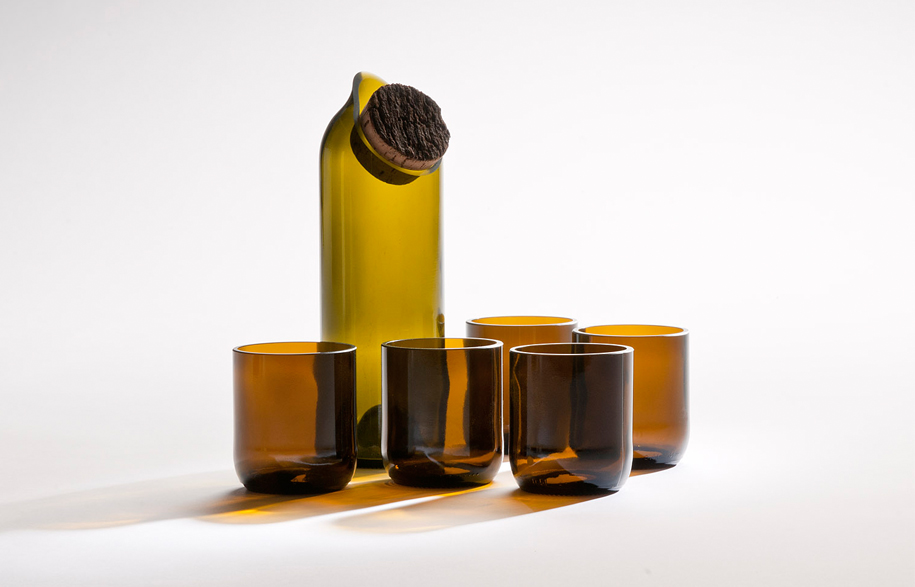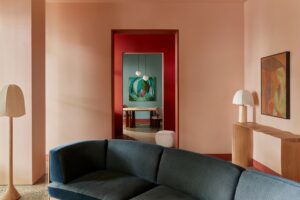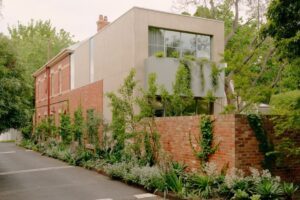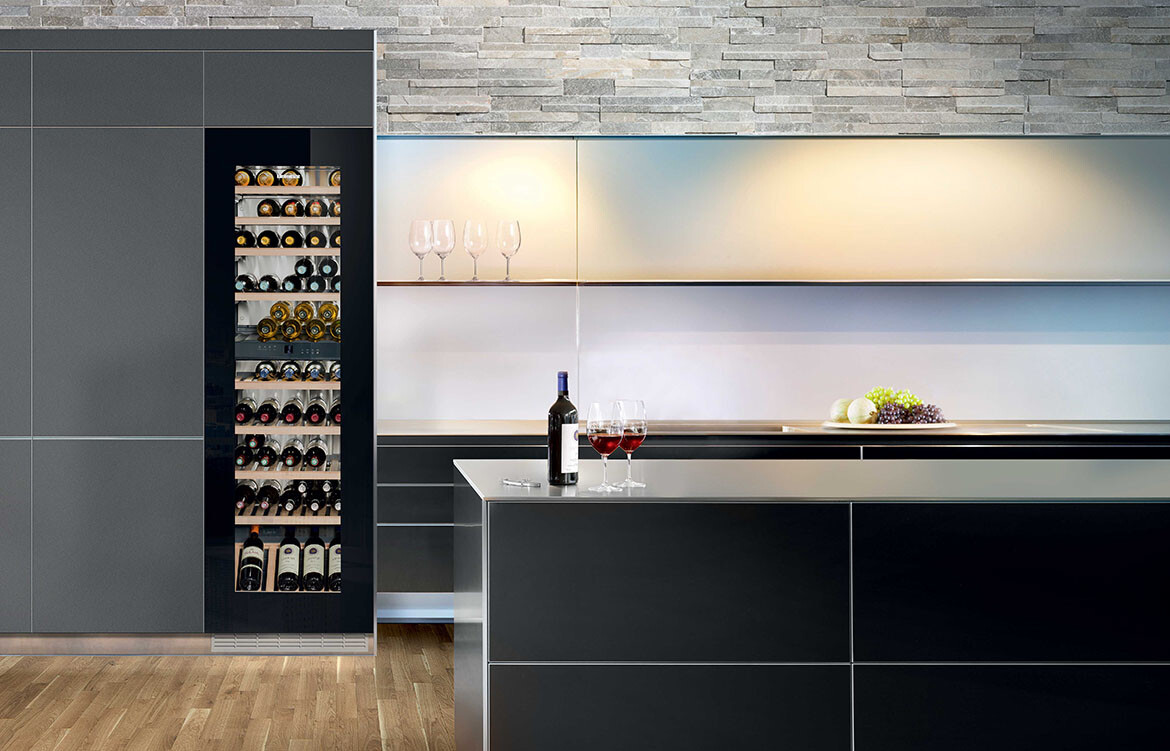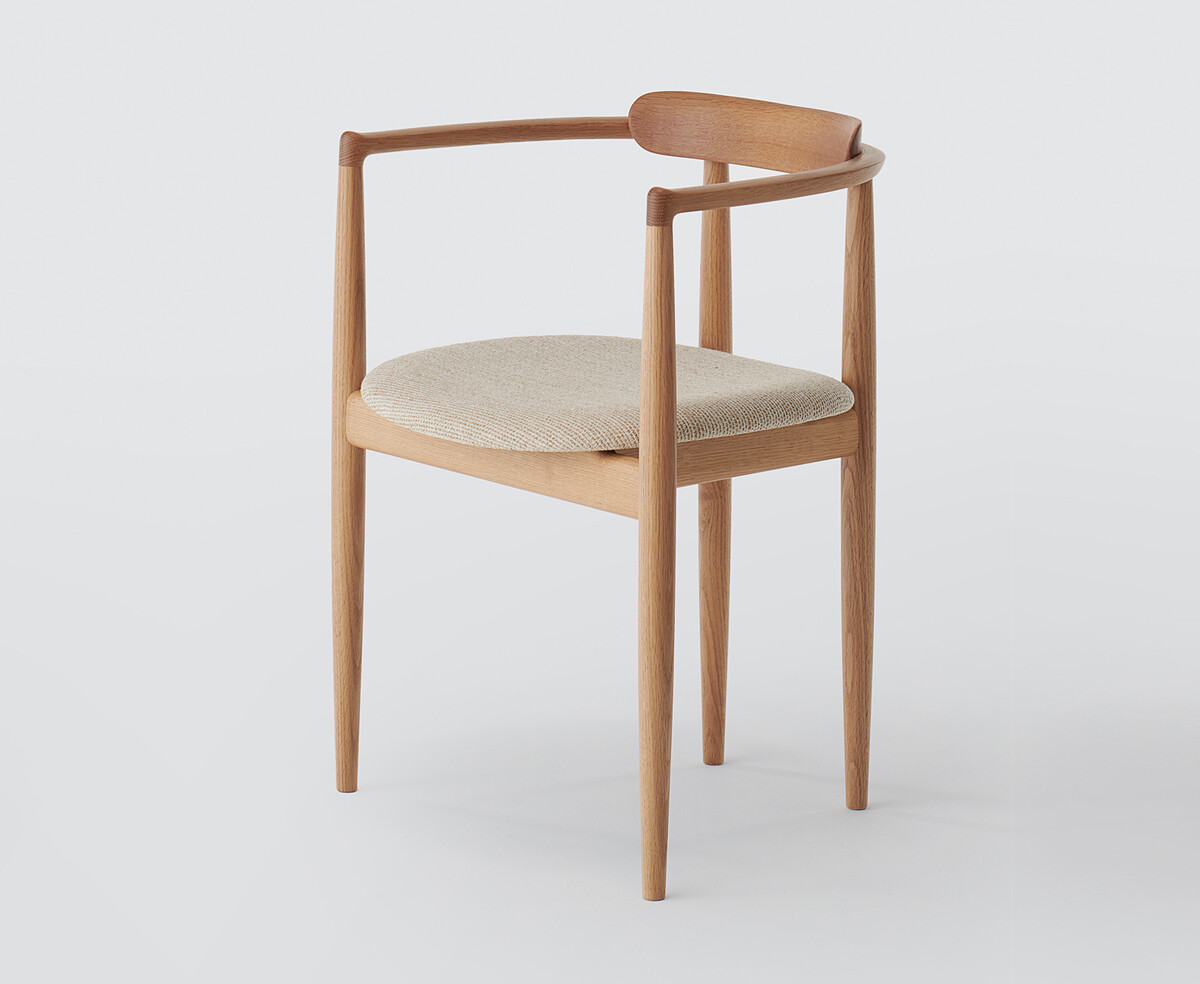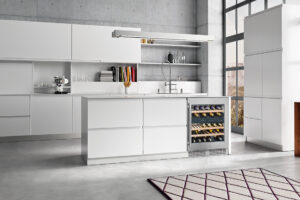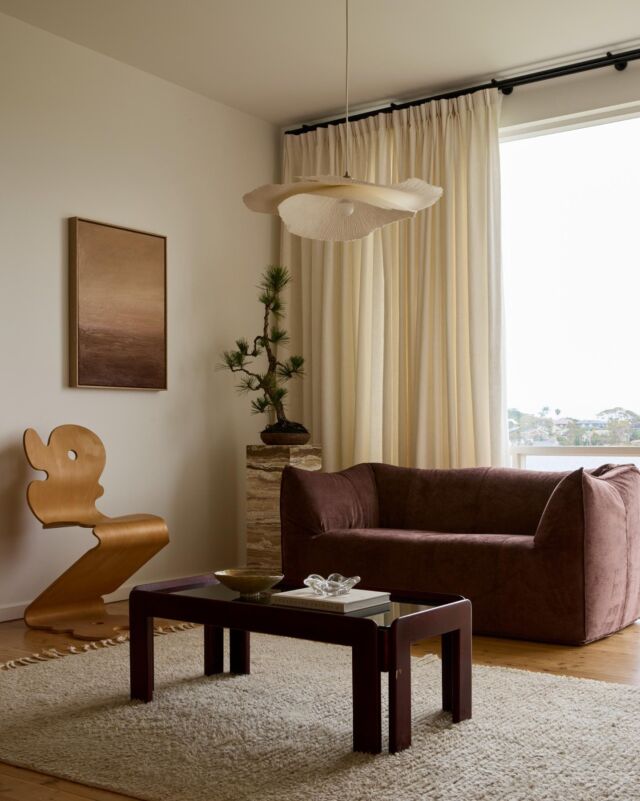Going for a drive with Amos Enders-Moje can be a time consuming affair. He slams on the brakes at every roadside rubbish pile to look for discarded glass. Old TVs are especially prized, with the screens becoming large serving platters and sushi plates alongside many other items, thanks to Amos’ incredible ability to turn glass into pretty much anything he can envisage.

Sushi platters made from TV screens
The 30-year-old from the south coast of NSW is from a long line of glass-makers. His grandfather owned a glass-cutting business in Hamburg, Germany. His father is the renowned glass maker Klaus Moje, a pioneer of the colour mixing of glass, and in 1981 established Australia’s now leading academic glass program at the ANU.
The young Enders-Moje began helping his father in the home glass-studio when he was about 11-years old. His art project for the HSC was a pair of heavily cut lead crystal bowls, utilising found materials.
“I’ve always had a passion for reusing glass,” he says. “I try to stay away from blowing glass as much as possible, because it uses a hell of a lot of energy. Those furnaces have to run 24/7 every day of the year, you cannot switch them off. “
Enders-Moje was recently commissioned by Canberra’s boutique Hotel-Hotel to create all of the glassware for the dining, lounge, bar and guest rooms. The elegant drinking glasses he produced were made from old stubby bottles sourced from local bars and restaurants (for the record, the green ones are Blue Tongue Lager bottles, while the amber are from German Oettinger). The bottles are cut on a diamond saw, with the rims tirelessly hand-polished.
 Nishi vase series, commissioned for Hotel-Hotel
Nishi vase series, commissioned for Hotel-Hotel
“What’s so great about using these recycled materials is they have a memory and a sense of playfulness about them,” he says. “Somebody will grab a glass or water jug and suddenly realise it’s a repurposed object; they might notice the coding on the sides, or the stippling on the bottom when they put it on the table. I love to see that look of recognition on their face.”
He says beer bottle glass is a “fantastic material” due to its strength and durability. “We’ve done tests with our glasses where we’ve held them high above our heads and dropped them onto concrete floors. They’ve bounced three or four times before they’ve broken.”
The hotel also commissioned him to create the in-room pendant lights (one in cognac, the other in pine-tree gruen) for each of the 68 guestrooms. These were hand-blown by Enders-Moje and his team (Scott Chaseling and Hillary Crawford) at the nearby Canberra Glassworks in Kingston.
He says he loves making utilitarian objects that people can hold and touch: “I don’t want to make things that people are too scared to use.”
At the moment Amos and his colleague and long time friend Wade Briggs are working on more than 150 products, many yet to be released.
We love the large cluster lights, especially the Godzilla Chandelier made from English cider bottles, each one hand-faceted to produce a ‘hammered’ effect that splinters the light in quite a stunning manner.
“Creating these lights is a zero waste operation,” says Enders-Moje. “The lip of the bottle is polished to make into a jewellery ring, and the bases are crushed up to be used in a new sustainable building material called Earthcrete.
He is typically modest about his talent: “The glass is already there, all I’m doing is finding a vision in it.”
 Wade Briggs (leftt) and Amos Enders-Moje (right). Photograph: Eryca Green
Wade Briggs (leftt) and Amos Enders-Moje (right). Photograph: Eryca Green
Product images: Rob Little
rldi.com.au
Mo-En Design
mo-endesign.com


